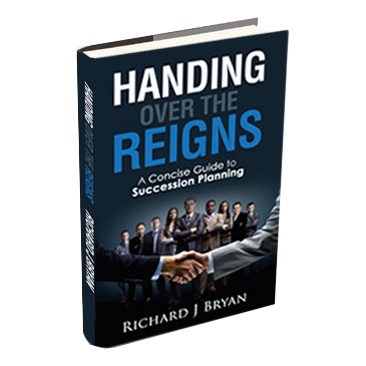Maximize Efficiency and Amplify Business Growth with AI Integration
“To survive you must be aware of the constantly changing business environment and adapt accordingly. Failure to do so will result in terminal decline.”
Never has that quote from my first book, Being Frank been truer than it is today, with the rapid advancement of artificial intelligence, or AI.
Yes, I get it: keeping up with the latest technological developments can feel overwhelming. But jumping on board the speeding train of tech won’t get any easier by postponing the leap.
What you may not realize is how familiar you are with AI already.
If you shop online, use a banking app, scroll social media, or search with Google, you know firsthand how adept AI algorithms are at predicting your behavior, answering your questions, and dishing up attractive options. They perform this feat based on the vast reservoir of data at their disposal.
In the business world, AI is doing this all the time, and not just for the Fortune 500 companies, or the companies that are building their own AI technology. The fact is, AI is hard at work right now sculpting the way all businesses will operate, engage with customers, and make strategic decisions in the future.
The only question is whether your business is making the most of this powerful tool.
Why Put “The AI Factor” to Work for You
David C. Edelman and Mark Abraham, in an article for Harvard Business Review said, “We are now at the point where competitive advantage will be based on the ability to capture, analyze, and utilize personalized customer data at scale and on how a company uses AI to understand, shape, customize, and optimize the customer journey.”
In other words, as customers learn to expect timely responses, offerings tailored to their own decision-making history, and a wide array of solutions curated from an array of business partners, your company can’t afford to lose market share by being slow, uninformed, and limited in its network. AI offers you a chance to leverage all the data you’re already sitting on and use it to grow your business.
I recently had the privilege of listening to Asha Saxena, author of the book,The AI Factor: How to Apply Artificial Intelligence and Use Big Data to Grow Your Business Exponentially at the Metronomics Tip Top Business Growth Summit. While she recognizes that irresponsible AI use has raised privacy concerns regarding data acquisition and storage, she still asserts, “the only way to effectively identify, collect, and leverage big data is through the use of artificial intelligence.”
She bases this statement on what she calls the four v’s of big data: Volume, Velocity, Variety, and Value. There is simply more information being captured at lightning speed in unstructured forms (ranging from conversations to images) than humans can possibly sort through to find the value it holds for their businesses.
Saxena proposes four steps that can move you toward realizing the benefits of AI for your business.
- Assess your business: What is your current growth potential, and how poised are you to innovate and take some risks?
- Know your data-readiness framework: How prepared is your business’ structural organization to pursue a data strategy—assessing your objectives and your data management practices?
- Prioritize the first project: Select one high-value business goal that AI can enhance. Results from the successful deployment of AI in this area can then inform your future projects.
- Implement, measure, and scale: Put AI to work for you and monitor your outcomes with an eye to building on your early success.
How to Get Started
On a recent episode of HBR’s IdeaCast podcast, Ethan Mollick of the Wharton School at the University of Pennsylvania said the business world has now raced beyond the question, “What’s possible with AI?” to ask, “How can we refine it and use it within our organization?”
Unfortunately, AI doesn’t come with an instruction manual, Mollick said, so businesses will have to boldly start using it “for everything you legally and ethically can.” His research indicates that as many as 60% of employees already use AI secretly in their workplace. Without stated policies to guide them, workers may be quietly exploring the tool’s potential to simplify and speed up their work. They may be learning all kinds of productivity tips, but they’re not sharing those ideas with colleagues because they’re not sure how management will view their efforts.
So, to harness the growth potential of that covert exploration, according to Mollick, CEOs and managers should “start using [AI] and using it publicly.” For example, he suggested using it to assess a recording of decisions made in a team meeting.
Leaders in your organization can model responsible and forward-thinking behaviors. They can take the lead in checking the accuracy of the company’s data sources. They can exhibit curiosity about the tool, willingness to learn from others, and sharing of discoveries with the team. By setting an example of wise AI use, your leadership can open doors to accelerated productivity gains and smarter, more widespread AI use to reach your business objectives faster.
Will AI Cause Layoffs?
Mollick cautioned businesses not to implement AI just to reduce the human workforce. That, he said, would be “a short-sighted failure of imagination in many ways.” Rather than plugging AI in and laying human workers off, it is wiser to view AI plus human workers as the formula for expansion. Let AI make everyone more productive and your business more profitable.
Think of all the ways your company can put AI to work on the tasks it does best—sorting through data to suggest next steps and new solutions—so your people are freed up to focus on tasks where EQ matters more than IQ. Picture AI handing your sales rep all of a buyer’s historical information so the rep can deliver a highly personalized sales pitch.
Of course, incorporating AI into your organization will involve a delicate dance with the realities of maintaining employee satisfaction while achieving your business objectives. That dance is all about change management.
I recommend asking the four questions Mollick suggests as your company puts AI to work for you:
- What do you do that is no longer valuable? (With AI to do those tasks, where can you re-allocate time, energy, and resources?)
- What has AI just elevated from impossible to possible? (With some tasks easier or more repeatable, how can you reach for higher-value activities?)
- What can you move upmarket that you couldn’t do before? (How can you use all that processed data to give your customers the white glove treatment?)
- What can you downmarket or democratize? (Are there services you don’t have to reserve for only your biggest customers because you can now deliver them to everyone?)
AI will certainly shuffle and re-define roles in your organizational flowchart. That presents you with an opportunity to reskill the people you already employ so they can move into roles that have changed dramatically or simply didn’t exist before. This can entail not only learning new skills but also putting those skills to work in new occupations.
Already, some businesses are recognizing the strategic value of reskilling their own talent. They are straightforward in presenting their reskilling program as a means of ensuring their workers have jobs in a changing industry. They incentivize managers to provide the necessary training rather than hoarding talent. They make reskilling a core part of their employee value proposition, encouraging workers to get fitted out for new roles that are attractive to them.
An article by BCG summed up the future of reskilling in the face of AI and other developments: “Companies can count on two developments: the importance of a skilled and capable workforce will only increase, and the half-life of critical skills, particularly those related to advanced technology, will continue to shorten.
“The successful companies of the future will not only invest in human capital but also put the same level of effort and attention into tracking and reporting on skill building that they devote to investing in financial or tangible assets.”
Today, successful businesses will be the early adopters of AI who also prioritize reskilling of their workforce to maintain a ready supply of workers equipped to ride the waves of change into the future.
Want to grow your team so you can also grow your business? Click here for more information about CEO & Leadership Team coaching.
Sign up for our mailing list to be notified of upcoming events. You will also receive a free copy of Richard’s eBook “Top 7 Business Succession Planning Tips.”
Related Topics:
4 Tips for Developing Your Company’s Future
Developing Leaders in the Family Business: 3 Tips for Creating Positive Outcomes
Recession Proofing Your Business – Podcast with Richard Bryan & Mass Mutual CEO, Brian Trzcinski


